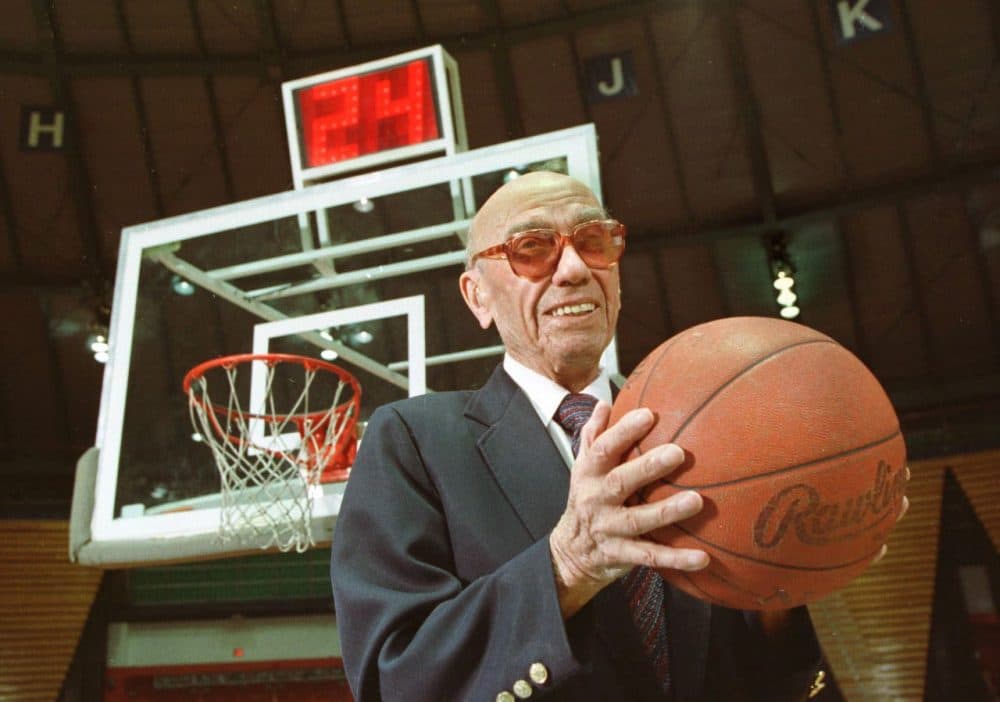Advertisement
Basketball's Shot Clock: A Brief History

On April 22, 1954, facing a scoring drought of epic proportions, NBA owners voted to implement a 24-second shot clock. The decision changed the league and the game of basketball.
Before that vote, the NBA had a problem: a low-scoring, time-killing breed of basketball was taking over the league. Teams tried to get the lead and then hang onto the ball until time ran out. In 1950, the Fort Wayne Pistons defeated the Minneapolis Lakers 19-18, the lowest scoring NBA game on record.
Danny Biasone was the owner of the Syracuse Nationals. Biasone was convinced the problem could be fixed by capping the amount of time a team could possess the ball before attempting a shot.
Biasone proposed the rule change at the annual NBA owners' meeting, and the shot clock debuted the following season. In the first game with the new technology on Oct. 30, 1954, the Rochester Royals defeated the Boston Celtics, 98-95.
The college game took much longer to come around. In the mid-1980s, the NCAA instituted a 45-second shot clock for men's basketball. The time was reduced to 35 seconds in 1993. Now, the men's Div. I college game is considering reducing the clock again. The NCAA experimented with a 30-second shot clock during the National Invitation Tournament (NIT), with the College Basketball Invitational (CBI) and CollegeInsider.com Postseason Tournament (CIT) also utilizing the shorter shot clock. Teams averaged four more points and 3.5 possessions per game.